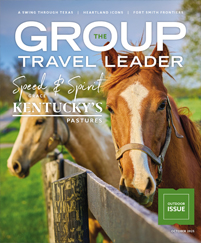What’s the difference between a professional tour company and the operation you’re running now?
One of the things I find fascinating about the group travel industry is that it encompasses a wide variety of people and business models. Among the readers of this magazine are professional tour operators with decades of experience; up-and-coming tourism entrepreneurs at the beginning of their business journeys; people who operate trips for nonprofit organizations; and amateur travel enthusiasts who plan group trips simply to have fun with their friends.
Each of these segments of the group travel community is important in its own way. But for anyone looking to grow their travel organization, attract more customers or earn more profit from group trips, it can be helpful to emulate some of the practices employed by sophisticated tour companies.
Here are five things professional operators do to stand out from the pack, along with ideas about how you can implement them.
Excellent Branding
Perhaps the easiest way to tell professionals from amateurs is to look at the quality of their branding. Trusted organizations have high-quality logos,v proprietary photography, carefully selected fonts and a customized set of brand colors. They use those brand elements consistently in every customer-facing communication. Fortunately, you can replicate this practice at minimum expense by working with a graphic designer to create a visual identity for your brand, complete with a logo and a set of font and color guidelines.
Seamless E-Commerce
Today’s consumers can purchase virtually anything online — and they expect to purchase tours online, too. Professional tour companies make this seamless with easy-to-use e-commerce functions on their websites. Fortunately, online sales and inventory management systems are easier to set up now than they have ever been. Many web-hosting companies offer e-commerce as a core service, and there are numerous great online payment and inventory solutions created specifically for tour companies as well. (Read more about managing customer payments here.)
Clear Communications
Great companies communicate clearly during every step of the customer journey. They give detailed descriptions of products on their website, compelling messaging to potential buyers before the purchase and plenty of information leading up to departure. Great communication makes customers feel like they’re in good hands. You can audit your communications by asking a friend or family member to look through your website or walk through a purchase experience to help you see what details may be unclear. (Build a great travel website with these tips.)
Top-Notch Guides
One of the primary benefits of traveling with an established tour company is the presence of a well-trained tour director. These professionals are excellent hosts and entertainers, but their value really comes into play when challenges arise. If you’re used to leading trips yourself, you may have the hosting and entertainment skills covered. But in order to be able to meet unexpected challenges, make sure you have a friend, local guide or CVB partner in each place your group visits who can help you navigate those situations.
Feedback Systems
If you have ever taken a trip with a sophisticated tour company, they have probably asked you to fill out an end-of-trip survey. These questionnaires aren’t just formalities; they provide company leaders with valuable information on their guides, itineraries, hotel partners and more. You might be able to get some of the same information from your travelers through informal conversations. But putting together surveys — and taking the results seriously — tells your customers that you really care about them and are always working to improve. (Check out how to create Post-Trip Surveys That Get Results.)










